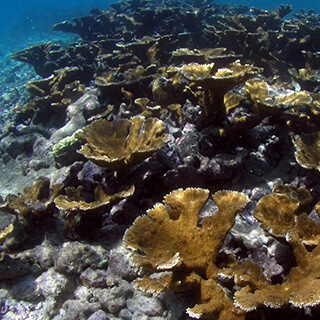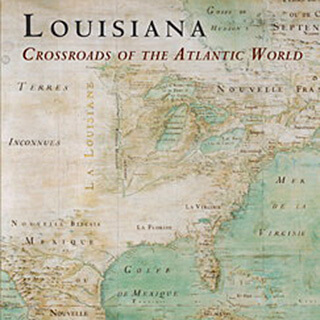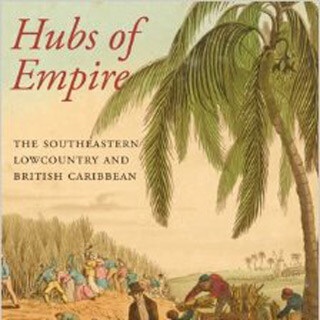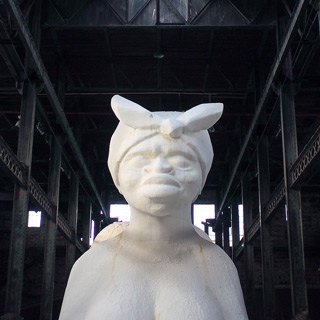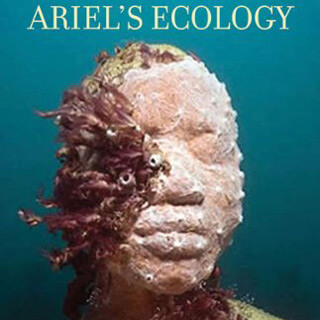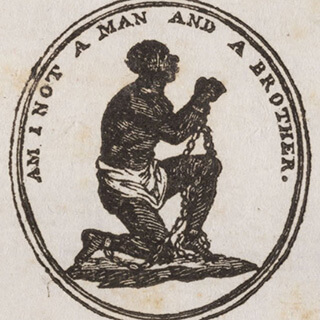Overview
In this review essay, Eric Solomon reads John Wharton Lowe's Calypso Magnolia: The Crosscurrents of Caribbean and Southern Literature (Chapel Hill: University of North Carolina Press, 2016) alongside Joshua Jelly-Schapiro's Island People: The Caribbean and the World (New York: Vintage Books, 2016).
The Great South
From 1873–74, towards the end of Reconstruction, journalist Edward King travelled the former Confederacy attempting to unpack the meaning of "the Great South" (1875) for largely northern readers of Scribner's magazine.1See King, "This book is the record of an extensive tour of observation through the States of the South and South-west during the whole of 1873, and the Spring and Summer of 1874" (i). Along with Scribner's publishers and illustrator J. Wells Champney, King aimed to provide "the reading public a truthful picture of life in a section" recovering from the ravages of war (i). King divided his documentary travel narrative into serialized segments largely along state and town lines.2See King's subtitle: "A Record of Journeys in Louisiana, Texas, the Indian Territory, Missouri, Arkansas, Mississippi, Alabama, Georgia, Florida, South Carolina, North Carolina, Kentucky, Tennessee, Virginia, West Virginia, and Maryland." King's empathetic analysis brought to light many of the problems (political, racial, economic) afflicting the still-occupied former Confederacy; "The South can never be cast in the same mould as the North," he wrote (793). One had to experience it to understand it. King's work reified and reinforced conceptions of how the idea of the South functioned in the American imaginary of that time: an exotic "other" land to be penetrated, explored, known, purposed.3See Jennifer Greeson, Our South: Geographic Fantasy and the Rise of National Literature (Cambridge, MA: Harvard University Press, 2010). Nearly 150 years later, despite numerous changes and persistent discussions of the demise of distinctly southern ways of being and doing, scholars and popularizers continue to debate and deploy variations of King's Great "Southern question" (794).

In different ways, both John Wharton Lowe's Calypso Magnolia and Joshua Jelly-Schapiro's Island People descend from King's documentary travel memoir. While Lowe's Calypso Magnolia is written in an academic idiom, he extends The Great South to a larger Circum-Caribbean geography, proposing a movement across and not simply within. In contrast, Jelly-Schapiro's Island People draws from the well of Caribbean thinkers and documentarians in enacting theories of place through the practice of experience. Lowe travels imaginatively through literary texts. Jelly-Schapiro travels literally to examine histories and cultures of the islands he visits. However, like King, both ask readers big, overarching questions—what and where is the Great (circum)Caribbean?—and, more importantly, does it matter?
"Hyphenating Waters": Calypso Magnolia and the circumCaribbean

Lowe approaches these questions through a diligent analysis of books spanning the Mexican-American War (1846–1848) to the more recent Cuban American writing of the 1980s–90s. He invests substantial energy in altering the grand, exceptionalist narrative of southern literary studies, which goes (reductively) something like this: for decades after the Civil War, the South was a "Sahara of the Bozart," devoid of anything resembling "high" culture, until the arrival of native (white) sons such as William Faulkner4"The emergence of William Faulkner as the centerpiece of narrowly focused notions of Southern identity seemed to crystallize the inward-looking aspect of the discipline" (5). and the Nashville Agrarians, who almost single-handedly were responsible for a cultural Renaissance that proved "the South" to be a place of great, autochthonously conceived and produced, art. Like much other recent scholarship, including Candace Waid's excerpt in Southern Spaces which challenges the idea of the white exceptionalist Southern Renaissance, Calypso Magnolia seeks to rethink the South and southern literary history through specific attention to movement and migration across geographic and imaginary borderlands, and against any essentialist, bounded notion of "the South," southern racial demographics, or "southern culture." Lowe aims to "cross artificial boundaries," "to unlock old geographical and cultural restrictions," to "help us see ourselves anew" (ix, xi). Lowe invites us, as readers and scholars, to "reconfigure the South and the Caribbean" (11). These are large tasks that Calypso Magnolia sets and achieves to varying degrees.
Lowe's work enters existing scholarly conversations in what some have called the "New Southern Studies."5In a June 2001 special issue of American Literature, Houston A. Baker, Jr. and Dana D. Nelson coined the phrase "new Southern Studies" as an "emerging collective already producing a robust body of work" in rethinking southern culture (231). Baker and Nelson cite Patricia Yaeger's Dirt and Desire (2000) as one of these works. Baker's Turning South Again (2001) represents his own venture at this scholarship. In responding to the article which formed the basis of Lowe's book-length study, Kimberly Nichele Brown firmly places "Calypso Magnolia" within this scholarly trend: "the South" becomes "unmoored from its local or provincial connotations" and "finds its rightful place within transnational discourses" (82). Like others before him, Lowe uses an aquatic metaphor, "crosscurrents," in his scholarly act of drawing connections between "the South" as traditionally conceived and the broader circumCaribbean.
Lowe models his frame—"circumCaribbean"—after the "circum-Atlantic" work of Paul Gilroy and Joseph Roach, among others.6Lowe cites Glissant, Foucault, Bhabha, and Brent Staples as further influences. See Paul Gilroy, The Black Atlantic: Modernity and Double-Consciousness (Cambridge, MA: Harvard University Press, 1995); Joseph Roach, Cities of the Dead (New York: Columbia University Press, 1996). One can see Lowe approaching the term "circumCaribbean" in his earlier article on these subjects; in writing of Roach's "path-breaking" work, Lowe praises him for adumbrating "a culture of performance that circles around the Caribbean rim" (71). See Lowe, "'Calypso Magnolia': The Caribbean Side of the South," South Central Review 22, no. 1, 54–80. Spatially, writes Lowe, the circumCaribbean "embraces the coastal Gulf and the Caribbean, as well as the islands that dot the seas and the western Atlantic" (xi). Lowe moves around and within, creating a geography that is boundary crossing and somewhat nebulous by definition and limitation. In such a vast space, what is the rationale for the foci of individual chapters? Admitting the difficulty of language barriers and distinctions, Lowe opens the conversation to other scholars with greater proficiency in the non-English speaking locales of this circumCaribbean (11).


He begins with the Mexican-American War via southern writers who wrote about it, William C. Falkner (great-grandfather of that Faulkner), Arthur Manigault, and Raphael Semmes. Next, he presents two enigmatic figures of the nineteenth century—Lucy Holcombe Pickens and Martin Delaney—as writers who "saw the affinities of the coastal South with the Caribbean lands and had their characters crisscross Gulf waters" to and from Cuba (60). For Lowe, Pickens and Delaney were writers of the Caribbean imaginary who saw, from different worldviews, equal benefits in this crisscross movement. Calypso Magnolia then follows the seismic shift of the Haitian Revolution in subsequent literature. Lowe centralizes the work of Floridians Zora Neale Hurston and James Weldon Johnson and Tennessean Madison Smartt Bell, but he is careful to include non-US southern writers such as Victor Séjour, C. L. R. James, and Alejo Carpentier. Lowe then turns to the travel writing of northerner Constance Fenimore Woolson and the peripatetic Lafcadio Hearn, who "limned a new sense of the circumCaribbean" (18). His chapters five and six offer comparative readings of contemporaneous authors: Zora Neale Hurston through the prism of Claude McKay, and Richard Wright through George Lamming. Calypso Magnolia closes with the experience of Cuban American writers in south Florida largely in the final decades of the twentieth century.
Lowe is exhaustive and syncretic, weaving disparate strands across multiple locales from multiple perspectives. He is a close reader from the outset, and his copious plot summaries serve as helpful entrances into unfamiliar texts.
As necessary and vital as Lowe's molecular moves are to thinking anew about "southern" literature and scholarship, the overarching narrative still favors a certain way of perceiving. At the beginning of this project, before Lowe coined circumCaribbean and was talking only about the "Caribbean Side of the South," he aimed "to rupture the artificial boundaries of region and nation to reach out to the Caribbean" ("Calypso Magnolia," 60). Why must the US South "reach out"? Why must the "South" have a "Caribbean Side"? What if the Caribbean has no desire to be reached out to? What if there's no South to reach out? What if the gaze was reversed? Arguably, Lowe's impulse teeters on making the Caribbean an exotic "side-chick" to the central story. Why centralize Hurston and Johnson and Smartt Bell in a discussion of the Haitian Revolution? Why read Wright through the prism of Lamming and not complicate this impulse more thoroughly?

Lowe aims "to pursue narrative as it cuts across maps that create artificial lines around peoples and cultures" (7). Why not, then, make more radical departures in authorial choices and texts? For example, why not read Reinaldo Arenas's pre-exile La Vieja Rosa/Old Rosa (1980) as a "southern" text clearly speaking back to Faulkner's Absalom, Absalom! from a distinctly Cuban-to-US South direction?7Lowe broached this type of critical move at moments. In his final chapter, he posits a reading of Cristina García's The Agüero Sisters alongside Faulkner's Absalom, Absalom!. However, the aims of Calypso Magnolia seem to be more syncretic and surveying (317). As Kimberly Nichele Brown writes, "What would it mean to southern literary studies to cast Faulkner not just as a southern writer, but as a Caribbean one?" (86). How would such a reversal in perspective "cut across" more disruptively and make us rethink cultural hegemony more deeply? Such questions persist in a work that could justify its organizational logic more forcefully in conjunction with its larger aims. The "currents" of the Caribbean, after all, flow in multiple directions.
Additionally, Lowe writes, "I mean to suggest through the term 'Calypso Magnolia'" a "kind of cultural overlapping" (67). Overlapping seems to imply a one-directional filter that places something "new and fresh" atop a foundational norm, simultaneously rethinking and reifying it. Consider what Lowe labels "the overarching pattern of [his] book":
the movement of Southerners both physically and imaginatively, out of the constructed boundaries of the Southern United States into the wider world of the circumCaribbean, a process that unsettled notions of exceptionalism and nationalism alike, while simultaneously, and paradoxically, creating a vision of a new Southern empire, which would conjoin slave-owning states with the plantations and territories of the Caribbean, Central America, and beyond (22).
Aside from political and economic implications, what are we to make of the imperial cultural ramifications evident in this statement of the larger "pattern" of Calypso Magnolia? Throughout, Lowe brilliantly elucidates what "Southern" writers gain from such a physical and/or imaginative movement. What do those writers or thinkers "beyond" gain from this movement? The book lays "out the myriad ways the 'South of the South' has affected the inhabitants of the U.S. South," and attempts gestures in the opposite direction (1). However, the whole remains too linear and one-directional. Calypso Magnolia could benefit from a more circular, messier approach.
A weightier "Introduction" might have offered a firmer sense of what Lowe means by "crosscurrents" as an organizing principle. This is a substantial missed opportunity. Current is a term of physical movement. In more directly defining "crosscurrents," Lowe might have pulled together his circumCaribbean frame with other critical movements and interventions. As is, Calypso Magnolia leaves us with currents as an aquatic, uniting metaphor:8As Brown writes in her review of Lowe's earlier "Calypso Magnolia," "I can see many benefits of using the sea… to find points of connection between the South and the Caribbean" (83). where all is "tied… together across and upon the currents of the great sea" (19).
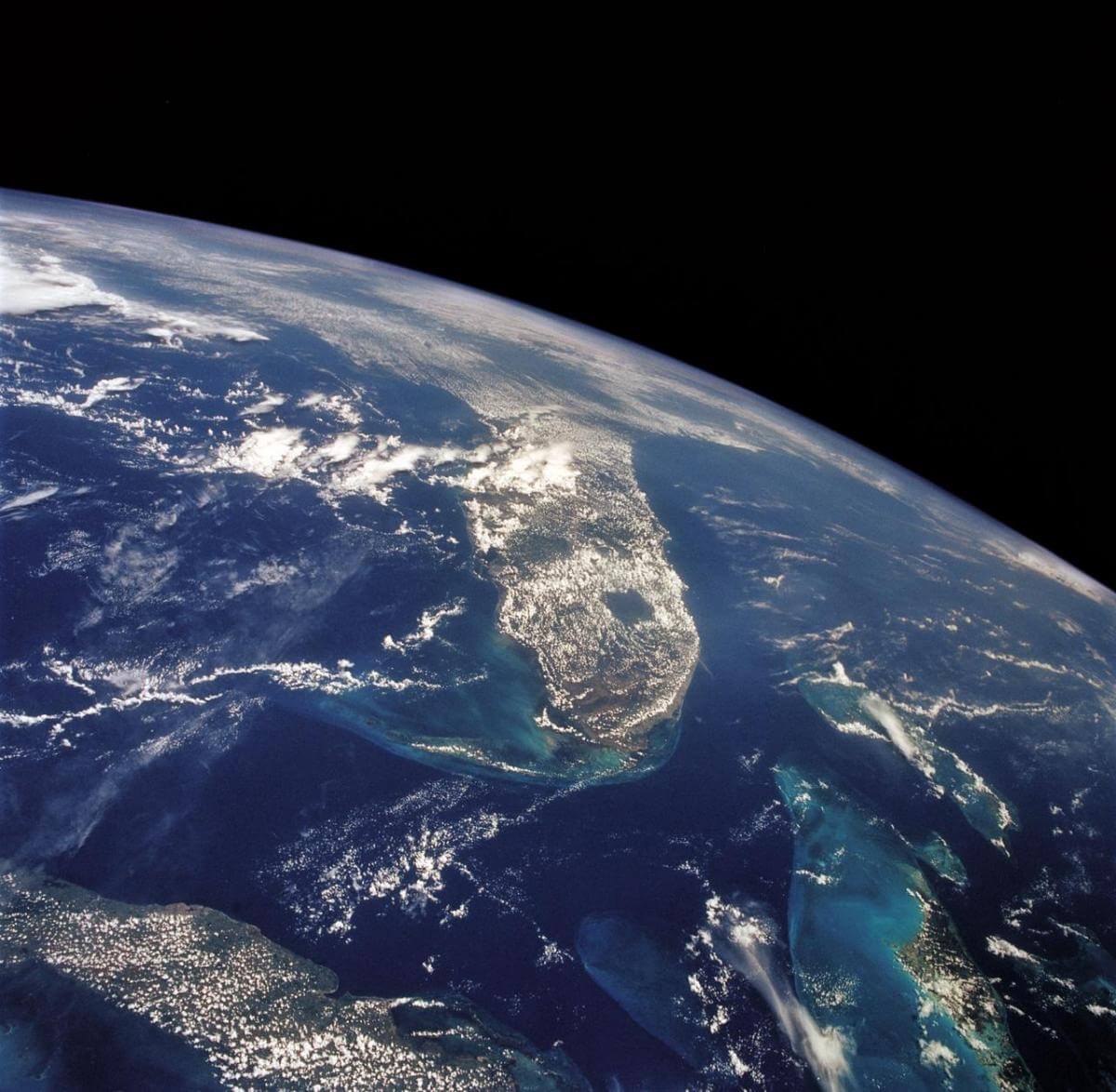
Lowe asks readers to cross those currents via his case studies. Calypso Magnolia's final and most exciting chapter, "Southern Aijaco: Miami and the Generation of Cuban American Writing," addresses crossings as they impact identity, pondering what it might mean to feel "crossed" or hyphenated in southern-Caribbean-ness. Spatially, Florida seems the perfect confined locale for Lowe's larger study: not quite "southern," not quite "Caribbean," but somehow a cross of both. He considers the work of Cuban-Americans of the "'one-and-a-half' generation," such as Gustavo Pérez Firmat's Life on the Hyphen and Next Year in Cuba, Cristina García's The Agüero Sisters, Virgil Suarez's Going Under, and Roberto Fernández's Holy Radishes! (293). Lowe's readings of Cuban American fiction and memoir, often "in and on the liminal space of the hyphenating waters between Cuba and Florida," are some of the most original and engaging in Calypso Magnolia (332). In reading lives on the hyphen, Lowe opens the door for future studies of hybridity modeled after his circumCaribbean framing. Despite my concerns, Lowe's writing is careful and specific, and always exemplary. As it seeks to shift the kinds of questions we ask, Calypso Magnolia's "crosscurrents" will help readers think beyond and across hyphenating waters.
"So Many One Night Stands": Island People and Island Hopping

In Calypso Magnolia's chapter on Woolson and Hearn, Lowe mentions Edward King's The Great South as making "extravagant claims as to the novelty of its 'discoveries,' which were achieved through 'penetration' and 'investigation'" (147). The Great South helped a nascent American empire "train the eye southward" as testing ground for its global ambitions and depicted in its illustrations stereotypes of African Americans and poor whites (147, 167). Unlike Lowe, Joshua Jelly-Schapiro's Island People: The Caribbean and the World never mentions The Great South. Similarly, many of the figures discussed by Lowe are not mentioned in Jelly-Schapiro's travel narrative. There are two small exceptions. While Lowe devotes half a chapter to Lafcadio Hearn, Jelly-Schapiro casually mentions a parking garage in Fort-de-France named in Hearn's honor; while Lowe seems to primarily read George Lamming only in relation to Richard Wright, Jelly-Schapiro reads Lamming directly in relation to Barbados, casually nodding to Wright in describing Lamming as a "native son" (341, 287). Otherwise, one should not approach a comparison of Calypso Magnolia and Island People via the figures they mention and/or study but the ideas and questions they elicit.9Other than a passing reference to Faulkner's Mississippi, the only traditionally defined "southern" writer to appear in Island People is Georgian Flannery O'Conner, whose relationship to depictions of race is mentioned in reference to Jean Rhys (12, 367). For US readers, Jelly-Schapiro's Island People again trains "the eye southward," to the "South of the South." However, unlike The Great South, Jelly-Schapiro does not present the Caribbean as a place of discovery, penetration, or investigation. Island People is an experiential travel narrative in which orientalism and exoticism are mostly resisted and the Caribbean is firmly centered.
What is Jelly-Schapiro's idea of the (circum)Caribbean? And why does it matter in/to the "World" of his subtitle?
While Edward King is understandably absent in Island People, another titan of travel writing hovers over many of its pages. Patrick Leigh Fermor's The Traveller's Tree: A Journey through the Caribbean Islands (1950) seems Island People's singularly most direct antecedent. Both are "pitched neither strictly at scholars nor at holiday makers" but at a general readership (Island People 11). Jelly-Schapiro returns to The Traveller's Tree throughout as he narrates his travels sometimes in relation to Fermor's own 1940s-era perceptions; it comes as little surprise to learn that Jelly-Schapiro wrote a new introduction to the 2011 reissue of Fermor's classic.10Joshua Jelly-Schapiro, "Introduction," in The Traveller's Tree: A Journey through the Caribbean Islands (New York: New York Review of Books, 1950, 2011), ix–x. The genealogical link is apparent. Like Fermor, Jelly-Schapiro is, among many other things, a travel writer. Like Fermor, Jelly-Schapiro comes from elsewhere.

Fermor is not the most important figure looming over Island People. As a Caribbeanist thinker, Jelly-Schapiro is influenced largely by C. L. R. James. In fact, Island People begins and ends with James and feels like an epic homage to him: "But the Caribbean, James argued, was unique" (5); "I had… adopted C. L. R. James as a kind of intellectual hero and style icon alike" (401). For Jelly-Schapiro, James was "his first big intellectual crush," and it is easy to see James's influence on Island People (401). In James, Jelly-Schapiro finds a great syncretic thinker who brought together disparate strands of philosophy, culture, and history into a coherent narrative in which the Caribbean was central (not marginal) to "the larger telos" of modernity, capitalism, and democracy (3). Island People, in its structure and vastness, also aims to be a syncretic work mapping and describing the central importance of the Caribbean in the world.
Unlike Lowe, Jelly-Schapiro is not a literary critic but a geographer, and in large part, Island People reads as a much more "centered" and "bounded" investigation. Like Calypso Magnolia's "circumCaribbean-South," Island People considers its subject, "the Caribbean," as both "place" and "idea" (6). Although Jelly-Schapiro mentions the full range of Caribbean thinkers, Island People feels more invested in specificities of place and practice than theories or philosophies. "The abstraction was also a place," he writes (335), and "This book ponders not merely what the Caribbean is but where it is as well" (12, emphasis provided). Unlike Lowe, Jelly-Schapiro does not move around the circumCaribbean rim, but dwells on the subaquatic link of islands that form the Greater and Lesser Antilles. He "centers on the islands," viewing the "Caribbean as an archipelago: as a 'sea of islands'" (13). Whereas Lowe aims to move around and form connections, Jelly-Schapiro island hops, with nearly every chapter focusing on a singular island in the archipelago.

As a result, Island People often reads like a disjointed narrative of island hopping tourism, a text structured around what José Quiroga calls "scattered" islands that form "so many one night stands."11José Quiroga, Tropics of Desire: Interventions from Queer Latino America (New York: New York University Press, 2000), xiii. Like Fermor's Traveller's Tree, the structural logic lies in sections divided by island nations: part one, the "Greater Antilles" of Jamaica, Cuba, Puerto Rico, and Hispaniola; part two, the "Lesser Antilles," including Martinique, Dominica, and Trinidad. While Jelly-Schapiro often makes a joke of Caribbean tourists, some in thrall to "stories about how Papa Hemingway" got drunk on daiquiris on a Havana barstool "after a day of marlin hunting in the Florida Current," the lingering effect is of so many island-hopping one night stands in which the experience is fleeting even if fulfilling (117). The power of Island People is that it attempts to be something other than that story. It is a documentary effort to let the islands, their peoples, histories, and cultures, speak for themselves, from the Caribbean to the World.
Island People's textual logic constantly reminds readers that this is a book in which an outsider, a tourist, is describing, probing, and organizing a narrative to tell the rest of the "world" about it. No matter his affinity, deep care and carefulness, Jelly-Schapiro is still a traveler leaving traces in his archipelagic tour. You can, for example, follow his trail of hotels throughout.12The reader follows Jelly-Schapiro from Kingston's Myrtle Bank Hotel (44) to Havana's Hotel Nacional (99) and Havana Hilton (100) to San Juan's Condado Vanderbilt Hotel (175) to La Romana's Casa de Campo (216), Port-au-Prince's Hotel Oloffson (260), George Town's unnamed Hotwire.com recommendation (281), Grenada's Heliconia guesthouse (296), to Antigua's Sandals and "Florida-style condos" (309), St. John's Heritage Hotel (310), Fort-de-France's Hotel L'Imperatrice (336), Dominica's Pointe Baptiste (369), and finally, Jelly-Schapiro's last stop, Trinidad's "ugly new Hyatt" (400). As historically well-researched, fiercely intelligent, and superbly written as Island People can be, readers never stop travelling. You may choose to "enter" at the island of your choice. (I began with Cuba). All of this amounts to what can feel like a lack of foundation for important claims and moments to resonate.
Island People is immensely satisfying. If it often fails to resonate, it constantly reverberates. We learn about Brand Jamaica, run with Usain Bolt, hear Bob Marley, Pete Tosh, and Lady Saw, find Stella's groove, and search for the "moments of filial love" and the "ghosts of colonial violence" (49, 58); in Cuba, we enter the "empire of vice" (99), find cubanidad, Fernando Ortiz, El Taino y la yuma, José Martí, Carpentier, Batista, Che and Castro, have a "love affair with spandex" (113) and phallocentrism, meet Eleggua and Abakuá, Antonio Maceo and Bola de Nieve, Assata Shakur and Carlos Moore, and many more. And so on and on across the islands13A small list of Island People's inhabitants: in Puerto Rico (via the Bronx), we find Rita Moreno, Pedro Albizu Campos, Luis Muñoz Marín, Tito Puente, "El Cantante" Héctor Lavoe all sharing the same island; in the Dominican Republic, we read about tigueres, the Coliseum of Cockfighting (208), the "sex economy" (206), Trujillo, "los morenos" and a lack of "pride" in "racial hybridity" (221, 203), perejil and el corte; in Haiti, centered in the text, "at the core of the Caribbean story" (226), again revealing C. L. R. James's influence, the same perejil and el corte, Kreyol, the Massacre River, Toussaint L'Ouverture, Dessalines, the Citadel and Henri Christophe, Boukman, the Duvaliers, Tonton Macoutes, Carnival of Flowers and earthquakes where the "'earth moved like a wave and all was ruined'" (261), Titanyen and bodies, Wyclef Jean, Cité Soleil, Katherine Dunham, and "people's invisibility to their own state" (265); in the Lesser Antilles, we read about George Lamming and Rihanna, Paule Marshall, Jamaica Kincaid, Maurice Bishop, Barbuda's "breeding myth" (308), Montserrat's "volcano crisis" (315), Martinique's Aimé Césaire, Glissant, Fanon, Chamoiseau, and other "literary riches" (358), Jean Rhys and Dominica's "Candy Land for lovers of nature and calm" (365). until finally, Trinidad gives us Beyoncé (yes, that one), Eric Williams, Derek Walcott, "soul calypso," New Orleans and the rim of Carnival, Palance, "queer subcultures" and "gay-bashing norms," the "Black Power Killings," Stuart Hall, and the inevitable return to C. L. R. James.

Jelly-Schapiro's exhaustive, four hundred page, highly syncretic, travel narrative is indeed full of people, places, things, and historic events. Yet, in breaking the Caribbean into its disparate parts, Island People falls short in crafting coherent meaning—realistic, theoretical, or phantasmagoric—of the Caribbean idea. Perhaps this is an impossible request due to sheer scale, genre (travel narrative/history), and intended audience (general). However, many a Caribbean thinker has articulated a central argument for the basin's meaning and function—Edouard Glissant's Poetics of Relation, Antonio Benítez-Rojo's Repeating Island, Kamau Brathwaite's tidalectics, Wilson Harris's cross-culturality, Stuart Hall's "home of hybridity," and Derek Walcott's "sea is history," to name a few. Jelly-Schapiro touches on many of them in Island People, revealing both his deep knowledge of his subject and his recognition of the almost sheer impossibility of unifying the Caribbean idea into any original tidy narrative.
Is the Caribbean exceptional or relational? Island People does not seek to answer this question. Instead, in refusing to form concrete connections between the islands of the Caribbean and other comparative sites, Jelly-Schapiro follows his hero C. L. R. James in extrapolating Caribbean history and meaning to make larger claims about modernity and "the World" of his title: "It was in the Caribbean that many of the salient characteristics of the Americas at large—traumatic histories of colonialism and genocide and slavery; migration and creolization as facts of life; the persistent sense of cosmopolitan possibility and newness inherent to a New World—were brought into starkest relief" (8). Whereas Lowe's Calypso Magnolia works to rethink traditionalist readings of southern literary culture, Jelly-Schapiro's Island People refutes V. S. Naipaul's claim that "History is built around achievement and creation, and nothing was created in the West Indies" (11). In its aim to center the Caribbean in the World and document the West Indies as crucible of syncretic creation and significant global influence, Island People succeeds tremendously.
Wade in the Crosscurrents
Together, Lowe and Jelly-Schapiro have written one important work: Calypso Magnolia-Island People. Where Lowe is sometimes too lofty in his desire to bridge, Jelly-Schapiro is often too reductive in his discrete articulation of separate island spaces. Jelly-Schapiro's justification of a book solely about the Caribbean can seem too specific and isolationist. Lowe's constant syncretic desire to move across raises questions of positional privilege and universalist tendencies. In reading them side-by-side, readers can wade in the crosscurrents and decide for themselves what and where the (circum)Caribbean is.

The conversation between Calypso Magnolia and Island People benefits all who join it. In an era when a US travel ban seeks to curtail the movements of individuals and groups of people and much is made of walls and constructed borders, Lowe and Jelly-Schapiro remind us of the history of colonization, enslavement, exploitation, exoticization, narrativization, and migration at the heart of all histories of the Americas. Lowe cuts across the "artificial borders" confining the US South to rethink national borders and cultural restrictions; Jelly-Schapiro invites us on a journey in which America signifies much more than the myopic vision of any one nation-state and the Caribbean, place and idea, takes center stage in a history of all of the Americas.
Understanding what we mean when we say "South," "(circum)Caribbean," or "America" matters as our definitions and limitations directly affect those who get included and those who get excluded from our spaces and our ideas of place. Jelly-Schapiro writes, the "ways in which a place is imagined, especially by those with power to act on it, matters" (7). Both Calypso Magnolia and Island People help put into perspective how our ideas of place matter and reverberate locally and beyond. 
About the Author
Eric Solomon earned his doctorate in English from Emory University. Dr. Solomon is an independent scholar living in Atlanta, Georgia. He is currently revising his first manuscript.
Recommended Resources
Text
Gilroy, Paul. The Black Atlantic: Modernity and Double-Consciousness. Cambridge, MA: Harvard University Press, 1993.
Greeson, Jennifer. Our South: Geographic Fantasy and the Rise of National Literature. Cambridge, MA: Harvard University Press, 2010.
King, Edward. The Great South; A Record of Journeys in Louisiana, Texas, the Indian Territory, Missouri, Arkansas, Mississippi, Alabama, Georgia, Florida, South Carolina, North Carolina, Kentucky, Tennessee, Virginia, West Virginia, and Maryland. Hartford, CT: American Publishing Co., 1875.
Levander, Caroline F. and Robert S. Levine, eds. Hemispheric American Studies. New Brunswick, NJ: Rutgers University Press, 2008.
Lowe, John. "'Calypso Magnolia': The Caribbean Side of the South." South Central Review 22, no. 1 (2005): 54–80.
Munro, Martin and Celia Britton, eds. American Creoles: The Francophone Caribbean and the American South. Liverpool, UK: Liverpool University Press, 2012.
Roach, Joseph. Cities of the Dead: Circum-Atlantic Performance. New York: Columbia University Press, 1996.
Sullivan-González, Douglass and Charles Reagan Wilson, eds. The South and the Caribbean. Jackson: University of Mississippi Press, 2007.
Web
Burnett, L.D. "Reading List: Transatlantic History in the Long Nineteenth Century." Society for U.S. Intellection History. Blog post. July 27, 2012. https://s-usih.org/2012/07/reading-list-transatlantic-history-in/.
Coates, Ta-Nehisi. "The Slave Society Defined." The Atlantic. September 6, 2011. https://www.theatlantic.com/personal/archive/2011/09/the-slave-society-defined/244581/.
Jelly-Schapiro, Joshua and Marlon James. "A Caribbean Literary Renaissance." New York Review of Books. March 1, 2018. http://www.nybooks.com/daily/2018/03/01/a-caribbean-literary-renaissance/.
"Living in the Atlantic World." Smithsonian National Museum of American History. Accessed February 12, 2018. http://americanhistory.si.edu/onthewater/exhibition/1_1.html.
Similar Publications
| 1. | See King, "This book is the record of an extensive tour of observation through the States of the South and South-west during the whole of 1873, and the Spring and Summer of 1874" (i). |
|---|---|
| 2. | See King's subtitle: "A Record of Journeys in Louisiana, Texas, the Indian Territory, Missouri, Arkansas, Mississippi, Alabama, Georgia, Florida, South Carolina, North Carolina, Kentucky, Tennessee, Virginia, West Virginia, and Maryland." |
| 3. | See Jennifer Greeson, Our South: Geographic Fantasy and the Rise of National Literature (Cambridge, MA: Harvard University Press, 2010). |
| 4. | "The emergence of William Faulkner as the centerpiece of narrowly focused notions of Southern identity seemed to crystallize the inward-looking aspect of the discipline" (5). |
| 5. | In a June 2001 special issue of American Literature, Houston A. Baker, Jr. and Dana D. Nelson coined the phrase "new Southern Studies" as an "emerging collective already producing a robust body of work" in rethinking southern culture (231). Baker and Nelson cite Patricia Yaeger's Dirt and Desire (2000) as one of these works. Baker's Turning South Again (2001) represents his own venture at this scholarship. |
| 6. | Lowe cites Glissant, Foucault, Bhabha, and Brent Staples as further influences. See Paul Gilroy, The Black Atlantic: Modernity and Double-Consciousness (Cambridge, MA: Harvard University Press, 1995); Joseph Roach, Cities of the Dead (New York: Columbia University Press, 1996). One can see Lowe approaching the term "circumCaribbean" in his earlier article on these subjects; in writing of Roach's "path-breaking" work, Lowe praises him for adumbrating "a culture of performance that circles around the Caribbean rim" (71). See Lowe, "'Calypso Magnolia': The Caribbean Side of the South," South Central Review 22, no. 1, 54–80. |
| 7. | Lowe broached this type of critical move at moments. In his final chapter, he posits a reading of Cristina García's The Agüero Sisters alongside Faulkner's Absalom, Absalom!. However, the aims of Calypso Magnolia seem to be more syncretic and surveying (317). |
| 8. | As Brown writes in her review of Lowe's earlier "Calypso Magnolia," "I can see many benefits of using the sea… to find points of connection between the South and the Caribbean" (83). |
| 9. | Other than a passing reference to Faulkner's Mississippi, the only traditionally defined "southern" writer to appear in Island People is Georgian Flannery O'Conner, whose relationship to depictions of race is mentioned in reference to Jean Rhys (12, 367). |
| 10. | Joshua Jelly-Schapiro, "Introduction," in The Traveller's Tree: A Journey through the Caribbean Islands (New York: New York Review of Books, 1950, 2011), ix–x. |
| 11. | José Quiroga, Tropics of Desire: Interventions from Queer Latino America (New York: New York University Press, 2000), xiii. |
| 12. | The reader follows Jelly-Schapiro from Kingston's Myrtle Bank Hotel (44) to Havana's Hotel Nacional (99) and Havana Hilton (100) to San Juan's Condado Vanderbilt Hotel (175) to La Romana's Casa de Campo (216), Port-au-Prince's Hotel Oloffson (260), George Town's unnamed Hotwire.com recommendation (281), Grenada's Heliconia guesthouse (296), to Antigua's Sandals and "Florida-style condos" (309), St. John's Heritage Hotel (310), Fort-de-France's Hotel L'Imperatrice (336), Dominica's Pointe Baptiste (369), and finally, Jelly-Schapiro's last stop, Trinidad's "ugly new Hyatt" (400). |
| 13. | A small list of Island People's inhabitants: in Puerto Rico (via the Bronx), we find Rita Moreno, Pedro Albizu Campos, Luis Muñoz Marín, Tito Puente, "El Cantante" Héctor Lavoe all sharing the same island; in the Dominican Republic, we read about tigueres, the Coliseum of Cockfighting (208), the "sex economy" (206), Trujillo, "los morenos" and a lack of "pride" in "racial hybridity" (221, 203), perejil and el corte; in Haiti, centered in the text, "at the core of the Caribbean story" (226), again revealing C. L. R. James's influence, the same perejil and el corte, Kreyol, the Massacre River, Toussaint L'Ouverture, Dessalines, the Citadel and Henri Christophe, Boukman, the Duvaliers, Tonton Macoutes, Carnival of Flowers and earthquakes where the "'earth moved like a wave and all was ruined'" (261), Titanyen and bodies, Wyclef Jean, Cité Soleil, Katherine Dunham, and "people's invisibility to their own state" (265); in the Lesser Antilles, we read about George Lamming and Rihanna, Paule Marshall, Jamaica Kincaid, Maurice Bishop, Barbuda's "breeding myth" (308), Montserrat's "volcano crisis" (315), Martinique's Aimé Césaire, Glissant, Fanon, Chamoiseau, and other "literary riches" (358), Jean Rhys and Dominica's "Candy Land for lovers of nature and calm" (365). |

